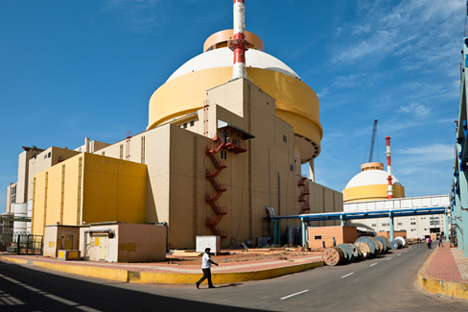Kudankulam unit 2 likely to start commercial operations in a few days

The KNPP will be a major source of power for South India. Source: Press Photo
The second unit of the Russian-built Kudankulam Nuclear Power Plant (KNPP) has reached its full capacity of 1,000 megawatts (MW) and is about to start commercial operations, a highly-placed Indian source told RIR.
“Unit 2 of Kudankulam has been synchronized with the grid after the successful completion of the scheduled tests,” the source said on the condition of anonymity as he was not authorized to talk to the press. “The authorities are almost ready to start the commercial operation of the second unit, which is expected in the next few days.”
The functioning of the second unit will go a long way in meeting southern India’s power demand, which goes up in the summer months, as an increasing number of homes and commerical establishments use air conditioning.
“After the synchronization of 1,000-MW second unit, the installed nuclear power generation capacity in India has reached almost 6,780 MW,” the source added.
The Rosatom State Atomic Energy Corporation of Russia constructed the KNPP, which is now being operated in Tamil Nadu by The Nuclear Power Corporation of India (NPCIL).
Along with two more units at KNPP, Rosatom is looking for a site in the state of Andhra Pradesh to construct six nuclear power units with a capacity of 1,200 MW each.
In December 2014, Russian President Vladimir Putin and Indian Prime Minister Narendra Modi signed the ‘Strategic Vision’ document, which envisages the construction of at least 12 more Russian-designed nuclear power units in India.
If using any of Russia Beyond's content, partly or in full, always provide an active hyperlink to the original material.
Subscribe
to our newsletter!
Get the week's best stories straight to your inbox
